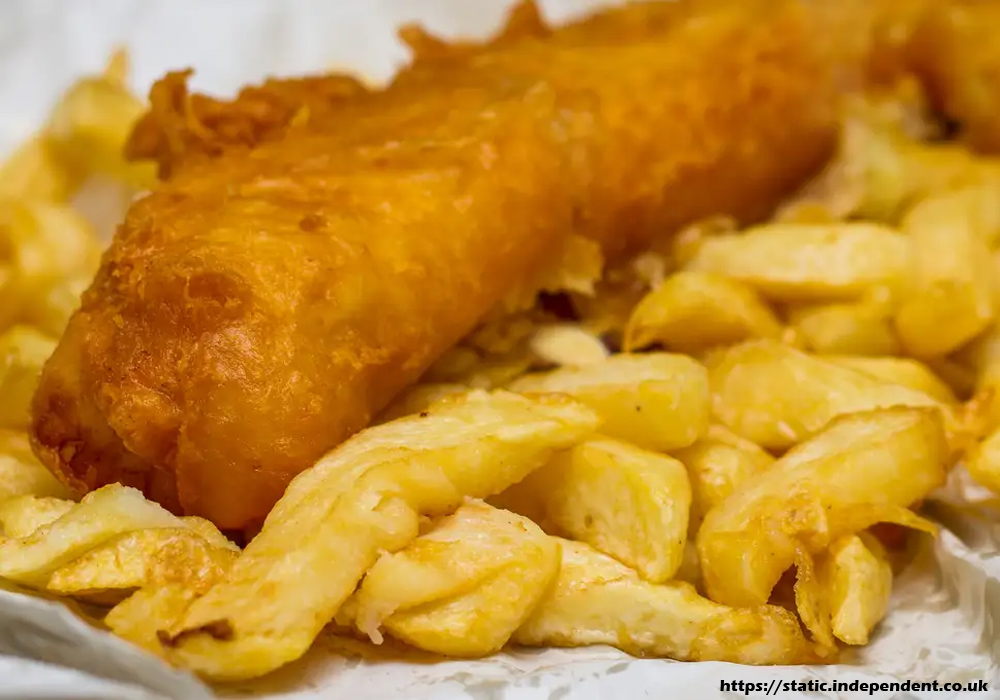
Who would have thought that two simple foods with their own rights, would one day overlap and lead to become a roaring success as modern and national food franchise outlets, as well as one that was more popular than all take-away food
Whether a health-driven decision or just a preferred choice, this wonderful mixture of potato chips and fish dates from the 1800s and maybe even before.
The population is increasing and along with the increasingly busy life of the community, there are many people who don’t want to cook after working all day. The alternative is to visit fast food outlets.
The demand for fast food is very strong but the market is saturated and one must be aware that feeding people is not an easy career choice. Selling food is definitely one of the oldest forms of trade, and it will never go out of style! Fish and chips shops have existed since the late 19th century.
Some small excerpts from the book Albert Jacks, which makes a good reading for any food lover or food lover.
Fish is a staple food for many people; chips are a staple food for many people – this same franchise store combination.
Fish fried in batter was originally a Jewish dish, which became increasingly popular in the eastern tip of London where many Jews settled during the nineteenth century. Even Charles Dickens refers to the fish warehouse that was fired at Oliver Twist (1839) and Henry Mayhew in his epic survey in London (1851-62), estimated to have been around three hundred fried fish sellers in the city.
“Peeled” fries go back even further. Previously, the most popular form of potato-based fast food was baked potato. But in the nineteenth century, the taste for chips spread, especially in Scotland and in northern England; they went crazy in the factory towns of Lancashire.
Waves of chip shops spread from the bottom from the north and waves of fried fish shops spread from the south until finally the two overlapped. In 1860, a Jewish immigrant named Joseph Malin opened a shop, on Cleveland Street in the east end of London, selling fried fish in the Jewish way with french fries for the first time. With the popularity and growing demand for cheap fast food, Malin soon opened fish and chips shops throughout London. Then in 1863, Mr. Lee’s Chippy opened a business in the Oldham market in Lancashire and soon he had a chain of stores throughout the North Country.
At the end of this century, fish and chips shops were accepted by British culture and in 1925 there were 35,000 shops.
Starting and Running a Fish & Chips Shop
The reality is that traditional fish and chips shops are fast becoming a common destination fast food and why not? You do this as a business with the aim of making money.
There is no doubt that the market exists, but you will find, unless you are a rare exception or unless you live in a rural area, that 90% of your customers will be within a few miles of your place. That is a very important fact to understand and consider for the following reasons:
Much of your business will depend on repeatability, this is where customer loyalty schemes can be very valuable and there are hundreds of possibilities in terms of customer loyalty.
You are very vulnerable to price and quality competition.
Your business perception is very important.
Chips shop and takeaways in general can be a very profitable business, but they have weaknesses:
They are expensive to start;
They involve a long-term commitment to property;
They are generally open 7 days a week, meaning you will not get much time to spend with family / friends etc .;
They need your constant attention; assigning managers to potentially invite disaster.
The beauty of the Fish and Chips business, is that it is a cross-cultural food that most people enjoy overall. There are many privately owned fish and chip shops, but if you prefer to support a proven concept, there are many South African fish and chip franchises available for you to consider. Once again location, commitment, and being able to bring finance for a while are all important for the success of your business.
Before you make the final decision whether to franchise or to open up your variations or concepts, check all franchise options, contact the existing franchisee, visit several and compare their operations and quality.









